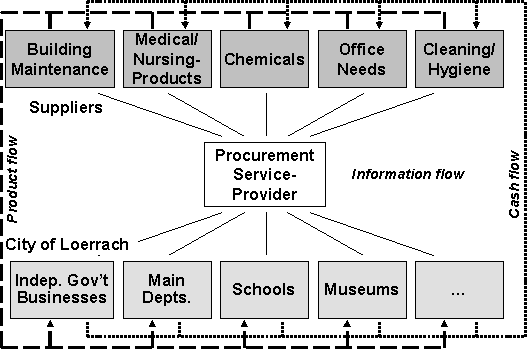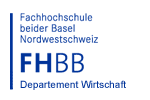Procurement solution for regular consumer goods of the City of Loerrach
The City of Loerrach hired an external service provider to operate a procurement solution for regular consumer goods. Independent of location, the consumers from administration, schools, swimming pools, and other municipal facilities can use a browser and the Internet to access the specifically agreed assortment and initiate bundled orders to suppliers. The solution, which is operated in the region by a start-up company and programmed at the Steinbeis Transfer Centre, is characterised by its innovative and pragmatic approach.
Inhaltsverzeichnis
1. Loerrach – a City Undergoing Change2. E-Government-Strategy
Target Concept
3. Procurement Solution
Procurement Process, Electronic Product Catalogue, Hosted Buy-side Solution, Functions
4. Implementation
Process Redesign, System Architecture, Microsoft Navision Axapta
5. Operation
Maintenance, Costs, Profitability
6. Success Factors
1. Loerrach – a City Undergoing Change
The Southern Baden city of Lörrach is a modern industry and services location in the centre of the country triad of Germany – France – Switzerland. With 46,000 residents, this large district town provides approximately 18,500 jobs and has a balanced economic structure. Many well-known companies produce in Lörrach. Important economic branches are: metals and machine construction, the automotive subcontracting industry, the textile industry, medical technology, dental health, solar technology, the confectionery industry, breweries, the wood and paper processing industry, and retail.
The structural change is also causing a revolution in Lörrach. The City is actively trying to harness this for renewal, and in the process, the “Vision Network Lörrach 2000” as conveyed by the acting lord mayor is providing orientation [Heute-Bluhm 2002]:
"The electronic network provides new channels for communication and dialogue. It links Loerrach to the world, is the backbone of international as well as local and regional information and data exchange and is an indispensable condition for a successful economy.
The cultural network is a lively cultural network and the most effective means of countering the threatening rift in the “electronic society” that is forming between “network literates” and “network illiterates” as well as other accompanying negative symptoms of the multimedia society.
The social network: Also, it was not possible in Loerrach to create new jobs for all the losers in the economic structural change. The new economic resources helped to create a social network."
Municipal Services
The City of Loerrach regards itself as a modern municipal services organisation with the claim of professionally fulfilling a broad range of services for numerous stake-holders. This is made difficult by the restricted leeway that must be accepted due to the division of labour between the federal government, the federal states, and the municipalities in Germany. This affects the definition of the type and scope of the services as well as tapping into funds. As a consequence, the financial situation of numerous cities and municipalities is extremely strained.
In 1999, an administrative reform was resolved in Loerrach, which had the objective of improving the quality of service and simultaneously increasing efficiency by creating new administrative units. The orientation towards creation of value processes is tied to dramatic organisational and cultural changes. In addition, new demands are being placed on information and communication resources as well as on management instruments. In Loerrach, administrative reform is accompanied by the introduction of SAP R/3 in financial accounting.
2. E-Government-Strategy
The term E-Government covers four areas, from the perspective of municipal administration [Gisler/Spahni 2000].
- the democratic communication and participation process
- relationships to stake-holders from the public
- internal administrative relationships and processes to provide the service
- relationships to suppliers and other upstream creation of value partners
This case study describes the procurement of regular consumer goods for various departments, independent government-owned businesses, and institutions of the City of Loerrach that are close to the city. Other E-Government projects that have been initiated by the City of Loerrach are:
- the introduction of a municipal council information system with which democratic communication and participation processes are to be improved
- the “virtual town hall”, which has the objective of improving the service to citizens by means of online application forms and in which the City participates in pilot projects at the federal state level.
- the use of the Internet in the cultural sector (Internet library, multimedia museum, booking system for courses at the music conservatory or adult education centre)
- the joint initiative of Energiedienst GmbH and the City of Loerrach “@ Multimedia at Loerrach Schools”
Starting Situation in Procurement, Objectives, and IT Environment
The local and organisationally diverse administration sites have a regular need for office supplies, hygienic articles, packaging material, etc. Figure 2.1 explains the starting situation of the customer-supplier relationships. Accordingly, many civic departments maintained their own relationships to many suppliers. Orders were placed without IT support and possible benefits from bundling the demand was not exploited. Moreover, in the municipality, there was a “warehouse in the cellar”, that was opened every 2 weeks by an employee. At that time, it was possible to pick up material. There was no overview of the inventories or the volumes consumed.
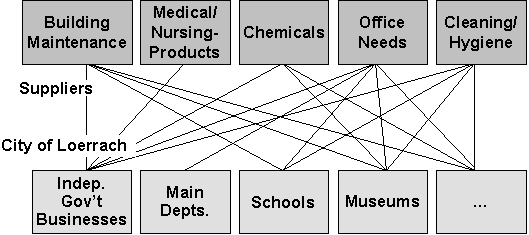
Figure 2.1: Starting situation in procurement at the City of Loerrach
Objectives
The starting situation was unanimously perceived as unsatisfactory and the requirements of a new solutions were:
- acceleration of the order cycle times
- reduction of the process costs of an order
- reduction of direct contacts between suppliers and employees
- more favourable purchasing prices
- relinquishing work that is not part of the City’s core competence
When the founders of the start-up company TEK Service GmbH, which moved into the Innocel Innovation Centre, Loerrach, presented a concept in the year 2000 about how procurement could be optimised by using the Internet, they received spontaneous approval. The concept envisioned that the City of Loerrach would be able to use an individual procurement application that would be operated by the service provider without the City of Loerrach having to make advance investments in IT. Here, all requirements could be bundled on this platform and all communication relationships reduced to one location. That way, the configuration between consumers and suppliers would change in accordance with Figure 2.2.
IT Environment of the E-Procurement Solution
In parallel to the E-Procurement project, the financial accounting system was converted to the SAP R/3 ERP system. The first modules were put into operation in December 2001 and the functionality was expanded step by step. The SAP areas that are affected are:
- budget planning, management, city treasury
- investment accounting and funds commitment
- cost accounting and activities accounting
- management information, budgeting, etc.
Partners of the E-Procurement Project
The City of Loerrach
As a pilot customer, the City of Loerrach is the legal operator of the E-Procurement solution and procurements are made in its name.
The Procurement Service Provider: TEK-Service GmbH
TEK-Service operates the server and provides information-based services. It was founded in the year 2000, and in mid 2002 it had five of its own employees and two freelance employees at the Innocil Innovation Centre, Loerrach.
The IT Partner and Software Developer: STZ IT-BC, Loerrach
Steinbeis-Transferzentrum IT Business Consulting at the Loerrach Professional Academy was founded in 1992. It developed the software that was presented here. The 15 employees are specialised in ERP-integrated E-Business solutions.
3. Procurement Solution
The Procurement Process
With the help of the E-Procurement solution, consumers can initiate and manage and order locally from their workplace using the Internet. Figure 3.1 shows an overview of the process steps.

Figure 3.1: Steps in the order process from the perspective of the consumer.
Â
- After logging into the E-Procurement system, the consumer selects the article or articles from the requested article catalogue. The different catalogues are an organisational aid for subdividing the assortment and can be comprised of multiple supplier catalogues. Personalising the system means that users are only shown what is envisioned for them or their groups, down to the article level. The prices that have been negotiated for the City of Loerrach are also shown. Selecting an article is simplified for the user by means of many search options. Users can create individual shopping carts for repetitive orders, which they can request at a later time, and then modify and order.
- A user or group-specific ordering budget may be specified. If it is exceeded, then an online order approval process is started. The release is obtained without media disparity.
- Finally, the order is booked in the system. The person making the order can trace the status of the order online and register complaints. A complaint causes the payment of service to be stopped.
- TEK reads out the recorded orders each day. TEK bundles the requirements, prepares the data for the suppliers according to the conditions of supply and forwards them periodically to a file. The suppliers deliver directly to the organisational units on fixed dates. The data that is relevant for analysis is saved by TEK and made available to the City of Loerrach. Consumption figures are used for requests for proposals for the following period.
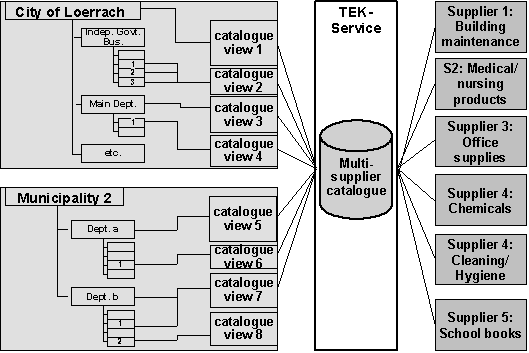
Figure 3.2: Generation of a personalised view from a central multi-supplier catalogue
A multi-supplier catalogue is at the centre of the solution. Figure 3.2 shows that a multitude of user-defined catalogue views are made available to this application from the master product lists of all suppliers.
A Hosted Buy-side Solution
Figure 2.2 showed that the connection between consumers and suppliers is achieved by means of a central service provider. This procurement service provider operates the technical platform of the procurement solution and provides the necessary services for this. Here, we are talking about a hosted buy-side solution, because the service provider runs the application on behalf of the buyer. There is no intermediary in the trade relationship because the provider is not the recipient of orders made by the City of Loerrach and receives no commissions on the sale of suppliers. Neither is the solution a marketplace, because the catalogues and functions that were tailor made for Loerrach are not available to third parties. From a technical viewpoint, other solutions for other customers run on the platform, and as a rule there are no cross connections between them.
The application requires numerous functions. Figure 3.3 gives an overview of them. The left half of the picture represents the City of Loerrach. It negotiates the framework contracts with the suppliers. TEK-Service provides the functions on behalf of Loerrach, which are shown in white on the left side. The right half represents the supplier side, which is where the catalogue data comes from. Some suppliers make use of TEK-Service services to maintain catalogue data (content management) and for transfer services, but this is for their own requirements and at their own cost.
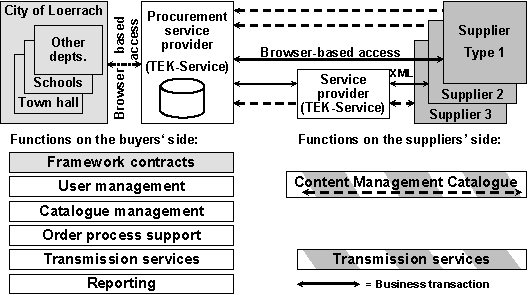
Figure 3.3: Functional division in the City of Loerrach E-Procurement solution
The central functions from Figure 3.3 are explained in the following:
- Framework contracts and reporting - The City can only reasonably comply with its obligation to issue public tenders for the consumer goods if it has an effective reporting tool. Based on the consumption in the prior period, the individual assortments are regularly advertised for bids and framework contracts are signed for the next time period. Requests for proposal and contracts are made at the City of Loerrach and the reporting data is provided by TEK-Service.
- User management - User management is managed by TEK-Service according to instructions from the City.
- Content management catalogue - Among other things, entering and maintaining catalogue data involves the following:
- Transferring the data in an electronic catalogue format - IF the supplier catalogues are available in XML-based BMEcat format sorted according to eCl@ss, then they can be read directly into the procurement system. However, most of the suppliers submit excel files that have to be processed using an ASCII interface before they can be read in.
- Normalisation and rationalisation of existing article data - Even before the format conversion, there must be standard wording and classification of the article data so that assortment classification and search functions can be guaranteed.
- Pictures and additional documents (technical flyers etc.) - Pictures are saved in the database and in the ideal case, are transferred when the data is read in. BMEcat supports this process. In other cases, they must be manually assigned.
- Additional documents (any number of files) are saved separately and linked to the master article list with pointers. Consequently, they can be downloaded and opened with a mouse click.
- Catalogue management - Suppliers don’t have direct access to the released master article list. Updates are submitted by file and put in by TEK-Service after a technical and content quality check (compliance with the framework contract).
- Order process support - Selection of articles is supported by various search options. Figure 3.4 shows a screen shot of a fast search. Users can make up any number of shopping carts and use them for repeat orders if need be. If the order limit is exceeded, an online approval workflow is started. Budget limits can be specified for individual persons as well as groups of persons (e.g. departments). After the shopping cart is submitted, there is an order confirmation. If the ensuing goods delivery is not reported as being incorrect using the complaint system within a specific time, then the order is accepted as being correct.
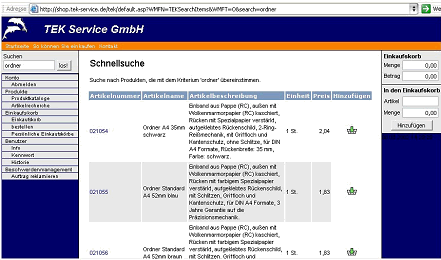
Figure 3.4: Fast search for articles
Â
- Reporting/analysis of your own buying habits: The City of Loerrach has a considerable need for information from the system relevant to ordering and controlling. Since the E-Procurement solution that is being used supports OLAP technology, it is easy to have almost any type of purchasing data analysed and displayed in “cubes”. Here, the transmission into a multi-dimensional database is usually performed by the automatic transfer of the OLAP cube. From there, the pivot area of Excel can be used for access in such a way that it appears that you are working with specific business intelligence software. By using data from the complaints system, supplier appraisals can even be performed.
4. Implementation
Process Redesign
The City of Loerrach made a fundamental change to various central procurement systems, right up to a standard ordering system for many individual employees at their workplaces. Consequently, the ordering and delivery processes had to be subjected to a complete redesign. At the same time, it was necessary to rework the order authorisation concept, which was ultimately combined with the new approval procedures for exceeding limits.
During the course of preparing the catalogue content, it was necessary to clean up the variety of products. In this process, which was supported by TEK-Service, every receipt has to be examined in order to find out what products were purchased in what volumes, and which equivalent products were possibly ordered from other suppliers under different names.
This was made more difficult because the scope of the project was continuously expanded and finally it almost reached all areas of municipal administration. This included all departments (e.g. schools, property and building management, central and citizen services, gardening and cemeteries, the fire department, culture and education, business development) as well as independent government-owned businesses (e.g. public services, waste water treatment, maintenance centre), and the Innocel Innovation Centre Loerrach.
Before the software was introduced, at least 60 employees were trained. Due to the simplicity of the system, there were no significant difficulties among the users.
After the basic introduction, the assortment range was expanded little by little. For the schools in the City, TEK-Service made it possible in 2001 for the first time to have common electronic purchasing of school books, and developed a standard article catalogue for school needs. It includes over 3000 articles from blackboard erasers to test-tubes. Even in the schools, the effort of ordering was reduced and as a buying syndicate, the 18 schools in the City of Loerrach benefited from more favourable prices.
New jobs were found for employees in the former materials distributing department.
Technical Platform, Software Architecture [System architecture]
History of the Software
The origin of the E-Procurement solution coincided with the foundation of the Innocel Innovation Centre, Loerrach, which was to promote start-up companies from the biotechnology and information technology sectors. It was there that the founders of TEK-Service presented their ideas and requested support. This resulted in an initial discussion with the local Steinbeis-Transferzentrum IT-BusinessConsulting, which was involved as an ERP expert to link E-Business and ERP systems. TEK offered to support the project both conceptually and through software development. This became the basis of a thesis by Mr. Tobias Andrae, who at that time was a student of the Steinbeis-Transferzentrums Loerrach at the Loerrach Professional Academy.
The E-Procurement add-on module was developed as an extension of the Navision Axapta basis system. Figure 4.1 shows the architecture of the solution.
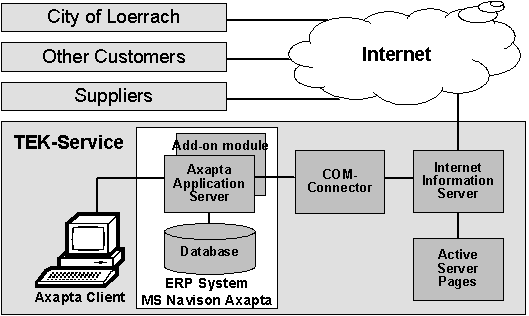
Figure 4.1: Architecture of the TEK solution with ERP system
Microsoft Navision Axapta as a Basis System
The integrated ERP system, Navision Axapta from Microsoft Business Solutions, is at the heart of the software. Axapta covers the following functions:
financial accounting, cost accounting, asset accounting, banking, enterprise resource planning, logistics/warehouse management (SCM), project management, production planning, product and version configuration, shop floor control (SFC), customer relationship management (CRM), marketing management, human resources, knowledge management, web applications, commerce gateway, questionnaires, management information using OLAP technology.
The software is object orientated. Since the ERP business logic can also be used in web applications, it is suitable for E-Business applications such as E-Procurement. The “Commerce Gateway” module creates an initial basis for interconnecting business processes spanning multiple corporate partners. Due to its modern n-tier architecture, Navision Axapta is distributable and scalable. Microsoft SQL Server as well as Oracle can be used as databases. Microsoft products are a required for operating systems.
5. Operation
Maintenance and Procurement Volume
The system in Loerrach was put into productive operation in November 2000. Since then the areas of application and functions have been continuously expanded. Today, TEK-Services employs 5 people to maintain operations and update the catalogues. It is possible for TEK-Services to expand the IT platform with the neighbouring STZ IT-BC at any time and without its own IT resources.
Approximately 5000 articles, ranging from office needs to fire department hoses, can be ordered today on the E-Procurement platform. In 2001, the cumulative purchase volume transacted by the City of Loerrach amounted to Euro 270,000.
Benefits, Costs, Profitability
Twenty months after its launch, the benefits of the solution are finding wide recognition. Bids are invited for each article, through which the cheapest supplier can be selected in each case. Orders can be bundled and large volumes purchased for better prices. In the past few months, municipalities surrounding Loerrach have joined the solution and are consequently forming a municipal buying syndicate.
The solution presented here only required a small initial investment. As a pilot customer, the City of Loerrach arranged a flat rate with TEK-Service.
Annual savings in the area of personnel costs amounted to at least Euro 30,000, after deducting the fees for TEK-Service. Additional savings result from eliminating the warehouse and from price reductions of up to 20%. The average time required to place an order was reduced from 160 minutes to 40 minutes according to a calculation by TEK-Service.
6. Success Factors
Success Factors and Specialities of the Solution
The following have made the main contribution to the success of the Loerrach E-Procurement project:
- classification of the project as a “strategic” network project of the City and the personal backing by the Lord Mayor and Mayor, who always gave support.
- the competence, motivation, and enthusiasm of the TEK-Service start-up company and its willingness to accept always the City of Loerrach’s changing requirements.
- an E-Procurement software that is built on a solid ERP system as well as the relationship to the IT partner STZ, with whom it was always possible to implement new requirements in a relatively straightforward manner.
Changes
Besides the previously mentioned technical and organisational changes, the E-Procurement solution gave an impulse to external companies that were involved. The first suppliers took the initiative to transact B2B business with other business partners besides the City. To that extent, the project led the way to modern forms of Internet-based cooperation between companies.
After the City of Loerrach, other organisations decided in favour of using the E-Procurement solution presented here:
- Municipalities: Schönau, Inzlingen, Schliengen, Tübingen, Reutlingen, Sigmaringen, Remseck
- Other fields: Municipal Administration Association of Schönau, District Office of Ebersberg, District Office of Saarlouis.

